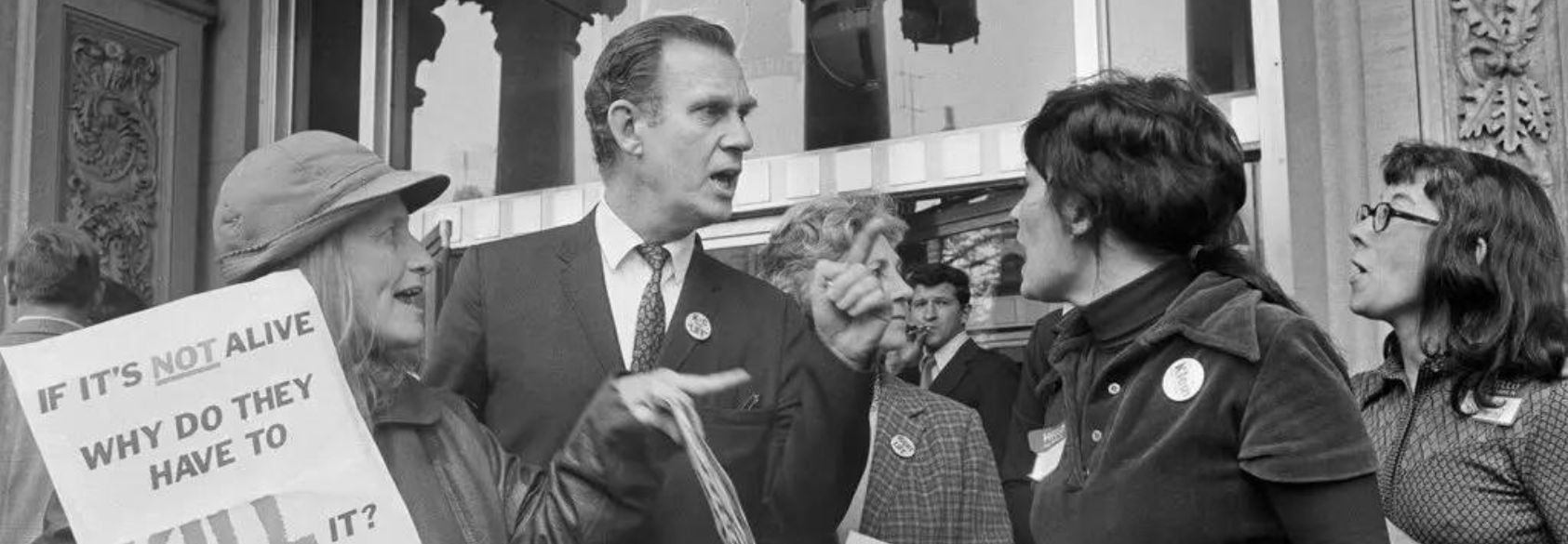How Polarization and Division Leads to Political Violence
Ask students: Who are some of the political and civil rights leaders who were assassinated in the 1960s? What are the three factors that lead to political violence in the United States?

Opponents and supporters of abortion rights outside the statehouse in Trenton, N.J., in April 1973, a few months after the Supreme Court ruling in Roe v. Wade. Photo credit: Associated Press
Share
July 24, 2024
Ask students: Who are some of the political and civil rights leaders who were assassinated in the 1960s? What are the three factors that lead to political violence in the United States?
Share
As Americans continue to grasp what led up to the threat on former President Trump's life, broadcaster Judy Woodruff sought some perspective on how this moment of political violence and deep division relates to the country’s past. It’s the latest in the ongoing series, America at a Crossroads.
View the transcript of the story.
Start of video to 4m:00s: an introduction to assassination attempts in the United States and parallels between the 1960s and now
4m:00s to 6m:30s: how political polarization has gotten worse today
5m:21s to end of video: potential ways to decrease political violence in the future
Explore our election resources to engage your students in learning about the election process and its significance at every level. Discover lessons on election fundamentals, laws, security, current events, youth involvement, and historic U.S. elections.
Enhance media literacy education with this blog's free lesson plans and resource recommendations to empower students' critical thinking in the digital age.
Republished with permission from PBS NewsHour Classroom.
